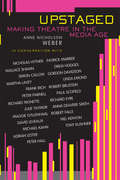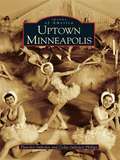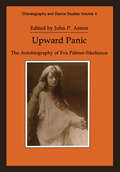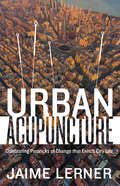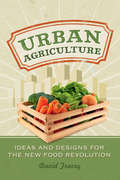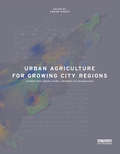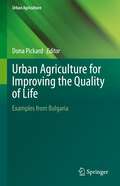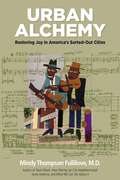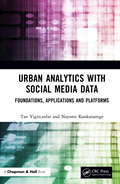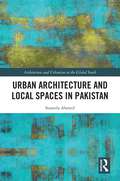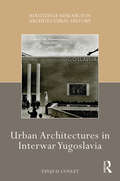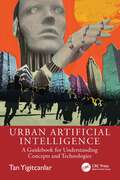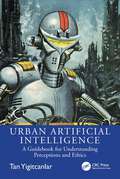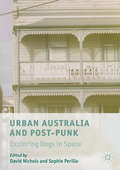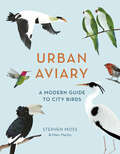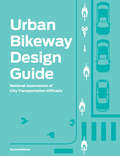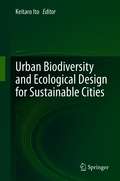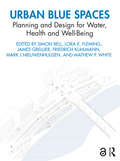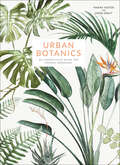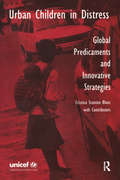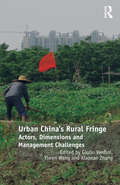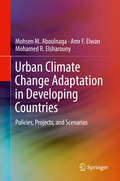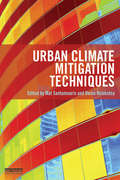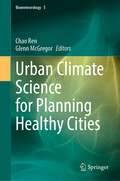- Table View
- List View
Upside-Down Dogs
by Serena HodsonCelebrated pet photographer Serena Hodson's silly, drooly, whimsical, and fun Upside-Down Dogs is sure to bring a smile to every dog lover's face. Her unique perspective brings these sweet, full color photos to life on the page.Hodson takes beautiful color photographs of man's best friend...but her furry subjects are always upside down. The results are stunning, charming, and laugh out loud adorable. No matter the breed, no matter the background, Hodson is able to capture the sweet personality of each dog she works with. There's no better book to help someone turn their frown upside down.
Upstaged: Making Theatre in a Media Age
by Anne Nicholson WeberHow can theatre thrive in a culture dominated by film and television? Interviews with stage actors, playwrights, theatre directors and others, including Julie Taymor, Tony Kushner, Anna Deavere Smith, Peter Hall, Wallace Shawn, Frank Rich, Simon Callow, Maggie Gyllenhaal, David Leveaux, Adrian Lester, Nicholas Hytner, Paul Scofield and Robert Brustein. Ever since the introduction of the talkies in the '20s and television in the '50s, live theatre has struggled for its place in a culture increasingly dominated by the screen. How does that dominance affect individual theatre artists and theatrical movements? How does it change what audiences seek from the theatre? What, in the end, is the role of live theatre in our media-saturated culture? Anne Nicholson Weber has sought answers from an extraordinary cast of leading actors, playwrights, directors, producers, critics, agents and marketers. In conversations that range from close-ups to cultural imperialism, microphones to myth-making, sit-coms to Shakespeare and vocal technique to voyeurism, these thoughtful observers illuminate the struggle of making a living versus making art; the modern audience's preference for images over words and for technology over the human body; and the imperative that theatre play to its essential strengths of language, metaphor, immediacy and community. Those who love theatre will find wisdom and support in this fascinating book.
Uptown Minneapolis (Images of America)
by Thatcher Imboden Cedar Imboden PhillipsOne of Minneapolis' most celebrated communities, Uptown is a distinct group of four vibrant neighborhoods that have long offered a host of cultural treasures to residents and visitors alike. In addition to the entertainment provided by the area's nightspots and lakes, Uptown also has a long history of presenting its residents with a wide range of housing choices, schools,churches and temples, parks, restaurants, and stores. This book uses rare photographs to document and celebrate Uptown's development from a 19th-century summer retreat and agricultural area into a thriving metropolitan business, entertainment, and residential district. From the Minneapolis Arena-home to the Minneapolis millers and the Ice Follies-to Lake Calhoun and Lake of the Isles, and from historic homes and majestic theaters to the Buzza greeting card factory. Uptown Minneapolis takes readers on a scenic journey through the heritage of this much-loved community.
Upward Panic: The Autobiography of Eva Palmer-Sikelianos (Choreography and Dance Studies Series #Vol. 4.)
by John P. AntonFirst Published in 1993.A complete autobiography of Evalina Palmer-Sikelianos (1874-1952), a woman of immense spiritual strength who fought for the arts against the background of war. She contributed impressively throughout her life to the revival of interest in classical Greece, the theatre and choral dance, and advocated an adherence to mythical authenticity rather than a romanticised view of Greek tragic drama.
Urban Acupuncture
by Jaime LernerDuring his three terms as mayor of Curitiba, Brazil in the 1970s and '80s, architect and urbanist Jaime Lerner transformed his city into a global model of the sustainable and livable community. From the pioneering Bus Rapid Transit system to parks designed to catch runoff and reduce flooding and the creation of pedestrian-only zones, Lerner has been the driving force behind a host of innovative urban projects. In more than forty years of work in cities around the globe, Lerner has found that changes to a community don't need to be large-scale and expensive to have a transformative impact--in fact, one block, park, or a single person can have an outsized effect on life in the surrounding city. In Urban Acupuncture, Lerner celebrates these "pinpricks" of urbanism--projects, people, and initiatives from around the world that ripple through their communities to uplift city life. With meditative and descriptive prose, Lerner brings readers around the world to streets and neighborhoods where urban acupuncture has been practiced best, from the bustling La Boqueria market in Barcelona to the revitalization of the Cheonggyecheon River in Seoul, South Korea. Through this journey, Lerner invites us to re-examine the true building blocks of vibrant communities--the tree-lined avenues, night vendors, and songs and traditions that connect us to our cities and to one another. Urban Acupuncture is the first of Jaime Lerner's visionary work to be published in English. It is a love letter to the elements that make a street hum with life or a neighborhood feel like home, penned by one of the world's most successful advocates for sustainable and livable urbanism.
Urban Agriculture
by David TraceyUrban Agriculture is packed with ideas and designs for anyone interested in joining the new food revolution. First-time farmers and green thumbs alike will find advice on growing healthy, delicious, affordable food in urban settings. From condo balconies to community orchards, cities are coming alive with crops. Get growing!
Urban Agriculture for Growing City Regions: Connecting Urban-Rural Spheres in Casablanca
by Matthias Kraume Maria Gerster-Bentaya Frank Helten Dieter Scherer Guido Spars Fouad Amraoui Abdelaziz Adidi Said Berdouz Majid Mansour Mohamed Mdafai Undine Giseker Mohamed ChlaidaThis book demonstrates how agriculture can play a determining role in integrated, climate-optimised urban development. Agriculture within urban growth centres today is more than an economic or social left-over or a niche practice. It is instead a complex system that offers multiple potentials for interaction with the urban system. Urban open space and agriculture can be linked to a productive green infrastructure – this forms new urban-rural linkages in the urbanizing region and helps shape the city. But in order to do this, agriculture has to be seen as an integral part of the urban fabric and it has to be put on the local agenda. Urban Agriculture for Growing City Regions takes the example of Casablanca, one of the fastest growing cities in North Africa, to investigate this approach. The creation of synergies between the urban and rural in an emerging megacity is demonstrated through pilot projects, design solutions, and multifunctional modules. These synergies assure greater resource efficiency; particularly regarding the use and reuse of water, and they strengthen regional food security and the social integration of multiple spheres. A transdisciplinary research approach brings together different scientific disciplines and local actors into a process of integrated knowledge production. The book will have a long lasting legacy and is essential reading for researchers, planners, practitioners and policy makers who are working on urban development and urban agricultural strategies.
Urban Agriculture for Improving the Quality of Life: Examples from Bulgaria (Urban Agriculture)
by Dona PickardThis book presents the findings of a multidisciplinary study on the effects of urban agriculture (UA) on the social, economic and environmental aspects of the quality of life in Sofia - the capital of Bulgaria. The analyses are based on a sociological survey representative of 3 districts of Sofia (among 750 people), in-depth interviews, focus groups, expert statements, ecological monitoring of UA sites, and spatial mapping of natural resources for UA. It also focuses on UA effects on the social well-being of citizens and communities, the correlation between social capital and UA attitudes, the challenges for UA to integrate disadvantaged social groups, the factors for success of small UA businesses, as well as the role of policy and civil society in developing UA. This work is also important for the analysis of the underlying links between all aspects of urban agriculture, many of which are valid beyond the local socio-economic context and environmental specifics of the city of Sofia.
Urban Alchemy: Restoring Joy in America's Sorted-Out Cities
by Mindy Thompson FulliloveMindy Thompson Fullilove presents ways to strengthen neighborhood connectivity and empower marginalized communities through investigation of urban segregation from a social heath perspective. "Fullilove passionately demonstrates how, through an urbanity of inclusion, we can heal our fractured cities to make them whole again. What if divided neighborhoods were causing public health problems? What if a new approach to planning and design could tackle both the built environment and collective well-being at the same time? What if cities could help each other?Dr. Mindy Thompson Fullilove, the acclaimed author of Root Shock, uses her unique perspective as a public health psychiatrist to explore and identify ways of healing social and spatial fractures simultaneously. Using the work of French urbanist Michel Cantal-Dupart and the American urban design firm Rothschild Doyno Collaborative as guides as well as urban restoration projects from France and the US as exemplary cases, Fullilove identifies nine tools that can mend our broken cities and reconnect our communities to make them whole.
Urban Analytics with Social Media Data: Foundations, Applications and Platforms
by Tan Yigitcanlar Nayomi KankanamgeThe use of data science and urban analytics has become a defining feature of smart cities. This timely book is a clear guide to the use of social media data for urban analytics. The book presents the foundations of urban analytics with social media data, along with real-world applications and insights on the platforms we use today. It looks at social media analytics platforms, cyberphysical data analytics platforms, crowd detection platforms, City-as-a-Platform, and city-as-a-sensor for platform urbanism. The book provides examples to illustrate how we apply and analyse social media data to determine disaster severity, assist authorities with pandemic policy, and capture public perception of smart cities. This will be a useful reference for those involved with and researching social, data, and urban analytics and informatics.
Urban Architecture and Local Spaces in Pakistan (Architecture and Urbanism in the Global South)
by Suneela AhmedThis book is set in Karachi, Pakistan and investigates the possibility of achieving localness through identifying urban process and their impact on built form, addressing how locals associate with the urban spaces and how they value it. Thus, the investigation, using the local terminology maqamiat, goes beyond the physicality of space and develops a framework that helps to understand the social, ethnic, economic, ecological and other the non-physical aspects of space, which are of value to the locals. The aim is to investigate the possibility of achieving localness through identifying urban design elements that can be incorporated into the process of designing new built forms that acknowledges what is valued by the locals instead of superimposing imported designs, negating the contextual realties, both physical and social. For this purpose, the book includes three case studies from Karachi. The book questions the aspiration of many cities in the South Asian context to imitate the built forms of Western cities (increasingly, Singapore and Shanghai) which are viewed as modern and represents future. The book will make a theoretical contribution to the existing literature on postcolonial urbanism and explore space from a local vantage point for understanding how to look inwards for aspiration.
Urban Architectures in Interwar Yugoslavia (Routledge Research in Architectural History)
by Tanja D. ConleyResulting from a twenty-year period of research, this book seeks to challenge contradictions between the concepts of national and modern architectures promoted among the most pronounced national groups of Yugoslavia: Serbs, Croats and Slovenes. It spans from the beginning of their nation-building programs in the mid-nineteenth century until the collapse of unified South Slavic ideology and the outbreak of the Second World War. Organized into two parts, it sheds new light onto the question of how two conflicting political agendas – on one side the quest for integral Yugoslavism and, on the other, the fight for strictly separate national identities – were acknowledged through the architecture and urbanism of Belgrade, Zagreb and Ljubljana. Drawing wider conclusions, author Tanja D. Conley investigates boundaries between two opposing yet interrelated tendencies characterizing the architectural professional in the age of modernity: the search for authenticity versus the strive towards globalization. Urban Architectures in Interwar Yugoslavia will appeal to researchers, academics and students interested in Central and Eastern European architectural history.
Urban Artificial Intelligence: A Guidebook for Understanding Concepts and Technologies
by Tan YigitcanlarTan Yigitcanlar offers a comprehensive exploration of artificial intelligence’s (AI) role in shaping modern cities. This volume delves into how AI‑driven analytics and big data provide city planners with deeper insights, enabling more informed decision‑making. These insights lead to more efficient resource use, improved public services, and better infrastructure management.In the digital age, AI is revolutionising various sectors, fundamentally altering our approach to problem‑solving and innovation. AI’s transformative power spans industries from healthcare to finance, and now, it is poised to redefine urban planning and development. Urban areas, as the epicentres of human activity and progress, face myriad challenges such as population growth, resource management, environmental sustainability, and infrastructure development. Traditional methods often fall short in addressing these complexities, making the integration of AI an essential frontier. Comprising seven extensive and insightful chapters, this volume bridges the gap between the theoretical potential and practical implementation of AI in urban contexts. It covers foundational concepts of urban AI, examines its applications across different domains, and explores how AI can improve urban life through smarter home technologies and personalised public services.This first volume is complemented by Urban Artificial Intelligence: A Guidebook for Understanding Perceptions and Ethics, which delves into the ethical and perceptual dimensions of AI in urban settings. Together, these volumes provide a holistic view of urban artificial intelligence, offering essential insights for urban planners, policymakers, researchers, and anyone interested in the intersection of AI and urban development.
Urban Artificial Intelligence: A Guidebook for Understanding Perceptions and Ethics
by Tan YigitcanlarThis volume thoroughly explores the perceptions and ethical considerations surrounding urban artificial intelligence (AI). Tan Yigitcanlar delves into the complex public and professional views on AI, offering invaluable insights for policymakers, urban planners, and developers.As the world rapidly advances technologically, the role of AI has become increasingly significant. AI’s transformative power spans various sectors, revolutionising how we operate and innovate in fields such as healthcare, finance, agriculture, and space exploration. Despite its wide‑reaching impact, the integration of AI into urban planning and development remains relatively underexplored. This is surprising given AI’s immense potential to revolutionise urban design, management, and experience. Comprising eight comprehensive and insightful chapters, this book examines AI’s role in urban contexts, including its applications, public perceptions, and ethical implications. The first part of the guidebook delves into varied perceptions of AI within different urban sectors, presenting detailed perception analyses on AI’s role in urban planning, local government services, disaster management, and the construction industry. The second part shifts focus to the ethical implications and responsible implementation of AI in urban settings. It provides frameworks and strategies to ensure AI technologies contribute positively to urban development while mitigating potential risks and ethical concerns.This volume, alongside its companion Urban Artificial Intelligence: A Guidebook for Understanding Concepts and Technologies, offers a holistic view of Urban Artificial Intelligence. Together, these books provide essential insights for urban planners, policymakers, researchers, and anyone interested in AI and urban development, guiding responsible AI integration to foster smarter, more sustainable, and equitable urban environments.
Urban Australia and Post-Punk: Exploring Dogs in Space
by David Nichols Sophie PerilloRichard Lowenstein’s 1986 masterpiece Dogs in Space was and remains controversial, divisive, compelling and inspirational. Made less than a decade after the events it is based on, using many of the people involved in those events as actors, the film explored Melbourne’s ‘postpunk’ counterculture of share houses, drugs and decadence. Amongst its ensemble cast was Michael Hutchence, one of the biggest music stars of the period, in his acting debut. This book is a collection of essays exploring the place, period and legacy of Dogs in Space, by people who were there or who have been affected by this remarkable film. The writers are musicians, actors and artists and also academics in heritage, history, urban planning, gender studies, geography, performance and music. This is an invaluable resource for anyone passionate about Australian film, society, culture, history, heritage, music and art.
Urban Aviary: A Modern Guide to City Birds
by Stephen Moss Marc MartinA unique guide to the unusual and often surprising birds that soar above our cities around the world. From frigatebirds wheeling over Rio de Janeiro to bowerbirds displaying in the suburbs of Canberra, penguins in Cape Town to pelicans in San Francisco, and huge flocks of starlings roosting around the Colosseum in Rome, the world&’s cities are home to a remarkable array of feathered citizens.Through Stephen Moss&’s expert knowledge and insight, Urban Aviary provides a beautiful guide to some of the most extraordinary species of city birds that have become native, including helpful spotting hints and fact boxes for each bird, all of which are brought to life by Marc Martin&’s distinctive and beautiful watercolours.
Urban Bikeway Design Guide
by National Association of City Transportation OfficialsThe NACTO Urban Bikeway Design Guide, Second Edition, is based on the experience of the best cycling cities in the world. Completely re-designed with an accessible, four-color layout, this second edition continues to build upon the fast-changing state of the practice at the local level. The designs in this book were developed by cities for cities, since unique urban streets require innovative solutions. To create the Guide, the authors conducted an extensive worldwide literature search from design guidelines and real-life experience. They worked closely with a panel of urban bikeway planning professionals from NACTO member cities and from numerous other cities worldwide, as well as traffic engineers, planners, and academics with deep experience in urban bikeway applications. The Guide offers substantive guidance for cities seeking to improve bicycle transportation in places where competing demands for the use of the right-of-way present unique challenges. First and foremost, the NACTO Urban Bikeway Design Guide, Second Edition will help practitioners make good decisions about urban bikeway design. The treatments outlined in this updated Guide are based on real-life experience in the world's most bicycle friendly cities and have been selected because of their utility in helping cities meet their goals related to bicycle transportation. Praised by Former Transportation Secretary Ray LaHood as an "extraordinary piece of work," the Guide is an indispensable tool every planner must have for their daily transportation design work.
Urban Biodiversity and Ecological Design for Sustainable Cities
by Keitaro ItoThis book highlights various designs for urban green spaces and their functions. It provides an interesting meeting point between Asian, European and North America specialists (researchers, planners, landscape architects) studying urban biodiversity; urban biodiversity and green space; relations between people and biodiversity. The most important feature of this book is the unique point of view from each contributor towards “the relationship between nature and people in urban areas”, in the context of the ecosystem and biodiversity in urban areas and how to manage them. All chapters explore and consider the relationship between humans and nature in cities, a subject which is taking on increasing importance as new cities are conceptualized and planned. These discussion and examples would be useful for urban ecology researchers, biologists, city planners, government staff working in city planning, architects, landscape architects, and university instructors. This book can also be used as a textbook for undergraduate and postgraduate city planning, architecture or landscape architecture courses.
Urban Blue Spaces: Planning and Design for Water, Health and Well-Being
by Simon Bell Lora E. Fleming Friedrich Kuhlmann Mathew P. White Mark J. Nieuwenhuijsen James GrellierThis book presents an evidence-based approach to landscape planning and design for urban blue spaces that maximises the benefits to human health and well-being while minimising the risks. Based on applied research and evidence from primary and secondary data sources stemming from the EU-funded BlueHealth project, the book presents nature-based solutions to promote sustainable and resilient cities. Numerous cities around the world are located alongside bodies of water in the form of coastlines, lakes, rivers and canals, but the relationship between city inhabitants and these water sources has often been ambivalent. In many cities, water has been polluted, engineered or ignored completely. But, due to an increasing awareness of the strong connections between city, people, nature and water and health, this paradigm is shifting. The international editorial team, consisting of researchers and professionals across several disciplines, leads the reader through theoretical aspects, evidence, illustrated case studies, risk assessment and a series of validated tools to aid planning and design before finishing with overarching planning and design principles for a range of blue-space types. Over 200 full-colour illustrations accompany the case-study examples from geographic locations all over the world, including Portugal, the United Kingdom, China, Canada, the US, South Korea, Singapore, Norway and Estonia. With green and blue infrastructure now at the forefront of current policies and trends to promote healthy, sustainable cities, Urban Blue Spaces is a must-have for professionals and students in landscape planning, urban design and environmental design. Open Access for the book was funded by the European Union's Horizon 2020 research and innovation programme under grant agreement No 666773
Urban Botanics: An Indoor Plant Guide for Modern Gardeners
by Maaike Koster Emma SibleyHave trouble keeping house plants alive? Struggling to find your green fingers? Fear not! You can still have a beautiful plant-filled home with this stunning guide to indoor plants. Whether you are looking to cultivate an entire indoor garden, or simply wish to know more about your single cactus, you can be sure to find the right information for you amongst the seventy-five plants in this stylish guide. And the best bit? All the plants are easy to maintain so even the most timid of gardeners can enjoy turning their hand to this green-fingered pastime. Learn how to care for succulents, cacti, flowering and foliage plants even with a full-time job, with this unique gardening guide that is made to fit alongside our modern-day schedules. With endless inspiration to brighten up your home,desk or office, this beautiful book of plants from across the world is a must for lovers of art and design, as well as plants.
Urban Children Distress
by Cristina Szanton BlancThis book describes how deprived urban children and their families and communities try to cope with scarcity, neglect and discrimination. It communicates the smell, the sweat, the agonies and the occasional triumphs of the poor in their day-to-day struggle for a rightful share of human dignity.
Urban China's Rural Fringe: Actors, Dimensions and Management Challenges
by Giulio Verdini Yiwen Wang Xiaonan ZhangGiulio Verdini, PhD in Economics, Urban and Regional Development, from the University of Ferrara, is Associate Professor in Urban Planning and Design and Co-Director of the Research Institute of Urbanisation at Xian Jiaotong-Liverpool University, People's Republic of China. Dr. Yiwen Wang, PhD in Architecture from the University of Nottingham, is Lecturer in Urban Planning and Design at Xian Jiaotong-Liverpool University, People's Republic of China. Dr. Xiaonan Zhang, PhD in Urban Geography at University of Salford, UK, is the former Head of the Department of Urban Planning and Design at Xian Jiaotong- Liverpool University, People's Republic of China.
Urban Climate Change Adaptation in Developing Countries: Policies, Projects, and Scenarios
by Mohsen M. Aboulnaga Amr F. Elwan Mohamed R. ElsharounyThis book describes the risks, impacts, measures, actions and adaptation policies that have developed globally as a result of the severe impacts of global climate change. In-depth chapters focus on climate change assessment (CCA) in terms of vulnerabilities and reflection on the built environment and measures and actions for infrastructure and urban areas. Adaptation actions specific to developing countries such as Egypt are presented and illustrated. Global Climate change adaptation projects (CCAPs) in developing countries, in terms of their targets and performance, are presented and compared with those existing CCAPs in Egypt to draw learned lessons. Climate change scenarios 2080 using simulations are portrayed and discussed with emphasis on a case-study model from existing social housing projects in hot-arid urban areas in Cairo; in an effort to put forward an assessment and evaluation of current CCA techniques. This book helps researchers realize the global impacts of climate change on the built environment and economic sectors, and enhances their understanding of current climate change measures, actions, policies, projects and scenarios.Reviews and illustrates the impact of global climate change risks;Provides an understanding of global climate change risks in seven continents;Illustrates policies and action plans implemented at the global level and developing countries' level;Discusses climate change assessment and vulnerabilities with emphasis on urban areas;Presents measures and action plans to mitigate climate change scenarios by 2080.
Urban Climate Mitigation Techniques
by Mat Santamouris Denia KolokotsaThe urban climate is continuously deteriorating. Urban heat lowers the quality of urban life, increases energy needs, and affects the urban socio-economy. Urban Climate Mitigation Techniques presents steps that can be taken to mitigate this situation through a series of innovative technologies and examples of best practices for the improvement of the urban climate. Including tools for evaluation and a comparative analysis, this book addresses anthropogenic heat, green areas, cool materials and pavements, outdoor shading structures, evaporative cooling and earth cooling. Case studies demonstrate the success and applicability of these measures in various cities throughout the world. Useful for urban designers, architects and planners, Urban Climate Mitigation Techniques is a step by step tour of the innovative technologies improving our urban climate, providing a holistic approach supported by well-established quantitative examples.
Urban Climate Science for Planning Healthy Cities (Biometeorology #5)
by Chao Ren Glenn McGregorThis volume demonstrates how urban climate science can provide valuable information for planning healthy cities. The book illustrates the idea of "Science in Time, Science in Place" by providing worldwide case-based urban climatic planning applications for a variety of regions and countries, utilizing relevant climatic-spatial planning experiences to address local climatic and environmental health issues. Comprised of three major sections entitled "The Rise of Mega-cities and the Concept of Climate Resilience and Healthy Living," "Urban Climate Science in Action," and "Future Challenges and the Way Forward," the book argues for the recognition of climate as a key element of healthy cities. Topics covered include: urban resilience in a climate context, climate responsive planning and urban climate interventions to achieve healthy cities, climate extremes, public health impact, urban climate-related health risk information, urban design and planning, and governance and management of sustainable urban development. The book will appeal to an international audience of practicing planners and designers, public health and built environment professionals, social scientists, researchers in epidemiology, climatology and biometeorology, and international to city scale policy makers.

